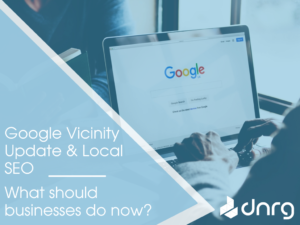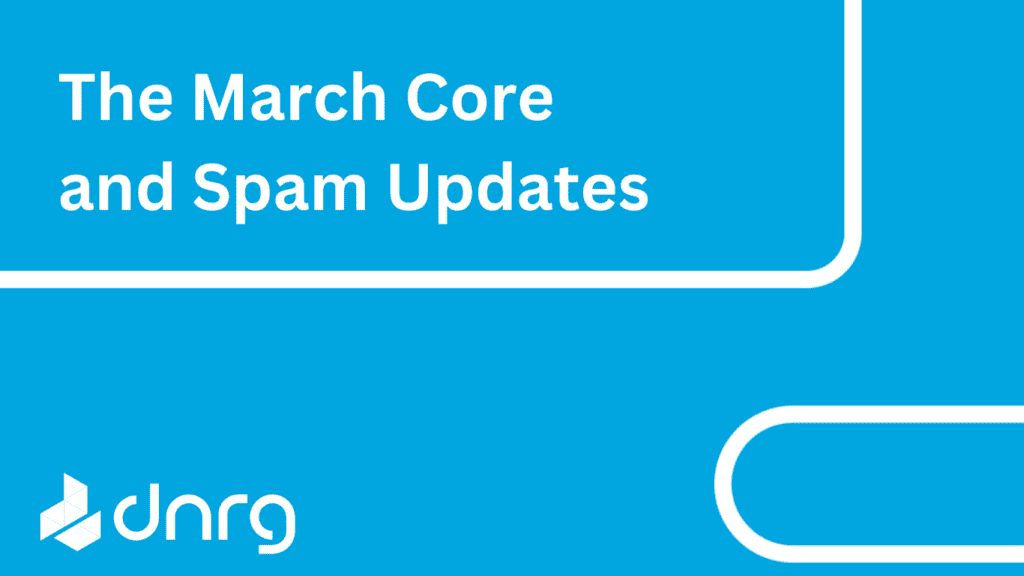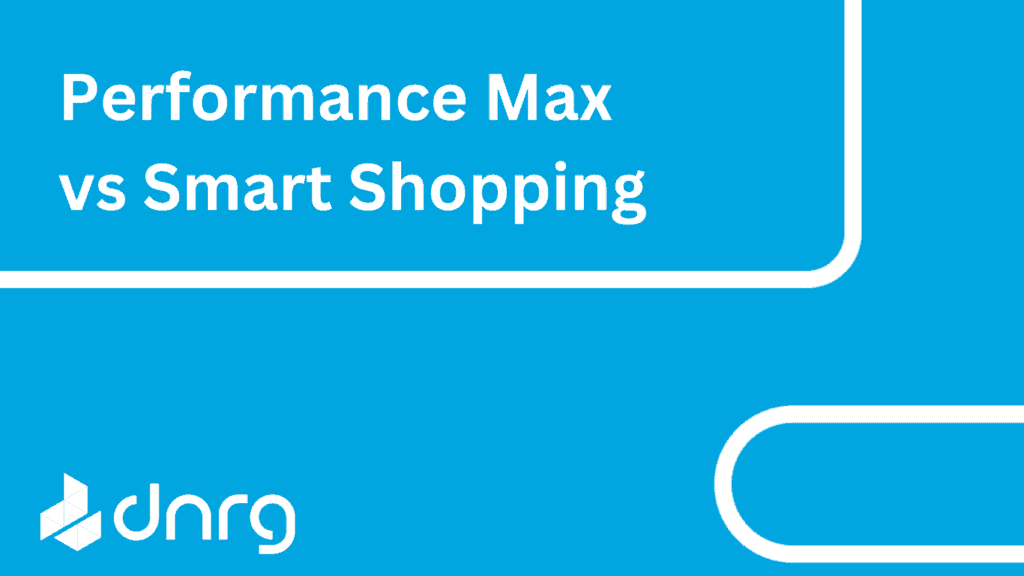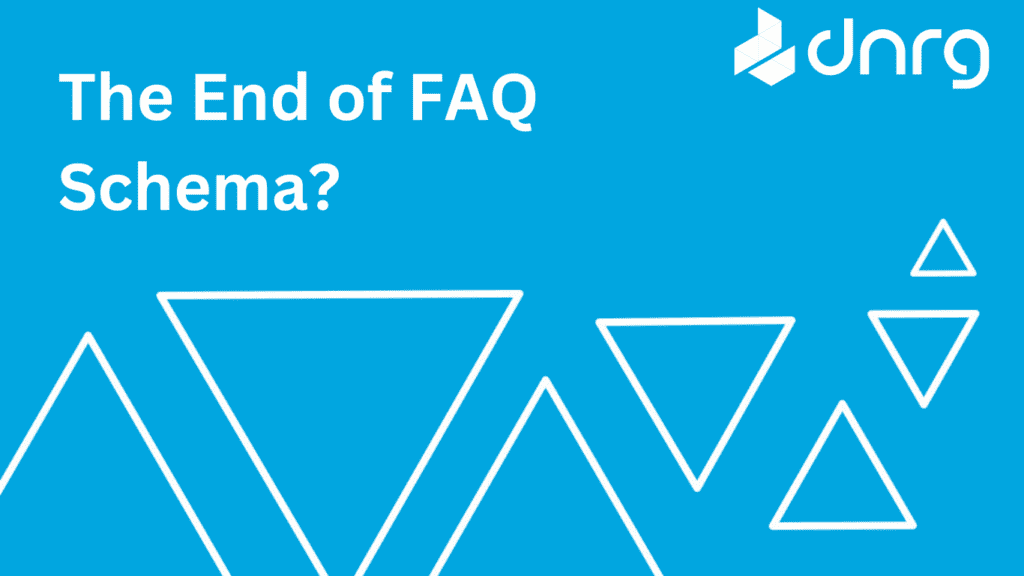Google’s Vicinity Update: What Local Businesses Need to Know!
On December 16th Google confirmed yet another algorithm update specifically targeting local SEO. The ‘Vicinity’ update. This latest algorithm was rolled out between November 30th and December 8th and many local businesses noticed huge fluctuations in local search rankings, and most importantly leads, during this period.
Our November 2021 local search update has concluded. It began Nov 30 and ran through Dec 8. It involved a rebalancing of various factors we consider in generating local search results. General guidance for businesses remains the same as covered here: https://t.co/uyXFfmUEIR
— Google Search Central (@googlesearchc) December 16, 2021
This has been the biggest change to local algorithms since 2016 when Google launched the ‘Possum’ update and businesses will need to adapt their local SEO strategies to keep ahead of the crowd.
In this article, we’re going to look at what ranking signals have changed, what it means for local businesses and what needs to be done to thrive from the latest Google update instead of falling victim to it, so – let’s get stuck in!
What is the Vicinity update all about?
As the name suggests, the main factor of this update is proximity. For years, we’ve seen businesses in highly competitive markets use loopholes to avoid the proximity factor in local rankings and rank highly for locations that are nowhere near their registered or serving address.
Following the Vicinity update, it looks as though Google will make this harder to be done as it continues to stamp out unauthentic and irrelevant listings or results for users. What does this mean for local businesses? Essentially, it should become easier to rank highly for relevant local searches as there will be less competition from businesses that are located further away.
As for the old school tactic of adding location keywords into the business name of your Google Business Profile (previously known as your Google My Business) listing, research from Sterling Sky found that there has already been a decrease in the potential ranking value of doing so since the update was rolled out.
The data goes on to suggest that businesses that are using keywords incorrectly in their business name have actually seen a drop in rankings meaning they’ll now need to revisit their local SEO strategy and start from scratch in optimising their business listings in line with Google’s guidelines to recover from recent changes.
Who’s doing it right (and who isn’t)?
Once the Vicinity update was announced, we closely monitored the performance of our client’s GBP listings, patiently waiting to see who would thrive or fall. We were then able to access data from over 288 listings which provided key insights into any industry trends and abnormalities.
As you can see in the above report, across the board our clients actually saw a 10% increase in performance on average and have benefitted from Google’s most recent local algorithm update. (November 2021 vs Jan 2022) Honestly, this came as no surprise to us as we’ve always implemented the most effective and up to date SEO strategies for our clients so if anything, this data only backs up what we’ve been doing for our clients even more.
Some of the industries we work with include automotive, home improvement & legal sectors and we haven’t seen any clear variations in performance which leads us to believe that this update doesn’t affect some industries more than others (as previous algorithm updates have), but solely focuses on GBP health and optimisation.
It’s also important to remember that Google strategically rolled out this update at a time of the year when most businesses see a seasonal decline in performance. So this does pose a slight haze when trying to analyse the data during the time directly after this update was rolled out. This is why we have compared November (before the algorithm update) to January (after the algorithm update) to help minimise the impacts of seasonality on the data.
What should local businesses do?
Unfortunately, there is no “one solution” for everyone. It all depends on how your business has fared following the update. For those who have avoided spammy tactics and stuck to the guidelines, it’s highly likely that the new update has actually worked in your favour – meaning you’ll just need to keep doing what you’re doing. But for those who have been negatively affected, it will mean completely reanalysing your business presence & upscaling your SEO strategy to clamber back into the SERPs (search engine results pages).
If you are one of the unlucky ones and your business has been negatively affected by the recent Vicinity update, then fear not! There’s always a way to turn things around, and with that, let’s start with the basics:
- Complete your Google Business Profile (Google My Business) listing
- Avoid Keyword stuffing
- Ensure your business address is correct
- Verify your business locations
- Ensure opening hours are accurate
- Actively manage and respond to ALL reviews
- Upload relevant photos
- Check and remove duplicate profiles for your business
- Choose the least amount of categories needed to describe what your business does
Following these basics will help optimise your business listing for relevant searches in the SERPs and recover from any negative impacts following the update. However, this is only one specific component of local SEO and these tactics are no secret. There is no doubt that many businesses will be making changes to all of the above, so it’s important to remember the other areas of SEO that will have an impact on your local rankings and help you to stand out from the crowd.
Local SEO vs Regular SEO
So, we’ve covered the Vicinity update and the basics of local SEO but what’s next? How do you take your SEO strategy to the next level and compete against this forever changing playing field? Basically, any and every other area of SEO.
It’s important to remember that your onsite (and offsite) SEO will have an impact on your local SEO, this has never been a secret and Google has always included this in their guidelines. But, where should you start? There are so many factors in SEO, it’s difficult to know where to begin and what to prioritise, which is why a defined SEO strategy is absolutely key.
To begin with, it’s likely that you will complete a website audit to identify any critical errors with your site. This is generally the foundation of any successful SEO strategy. Personally, I like to use tools such as ScreamingFrog and ahrefs along with Google Analytics and Google Search Console. All of these tools will give you a deep enough insight into your website’s health, position and authority to be able to identify what key areas you need to focus on.
Technical SEO
This fundamental area of SEO should always be a priority. While user experience will always be a core focus for Google and other search engines, it’s vital that the health of your website is optimised. At the very least, you’ll need to ensure that your website’s core web vitals are optimised including website load speed, error code URLs are correctly redirected and image files aren’t excessively large. Looking after your website’s technical SEO will help improve its crawlability and improve SERP performance.
On-page SEO
Keeping your on-page SEO optimised and up to date is crucial when it comes to competing in the SERPs. When optimising your on-page SEO, be sure not to miss out on any key factors. You’ll need to look at metadata, on-page content, keywords and schema (rich text) to name a few. Search engines present web pages to users based on the relevancy of their content to the user’s intent (among other things) so your content needs to be optimised if you want to compete.
Outreach/link building
Outreach (or link building) is often overlooked when it comes to an SEO strategy, often because it can be misunderstood, incorrectly carried out or just overwhelming for a lot of businesses. However, link building is a vital part of SEO and should always be a part of your strategy if you want your online presence to grow. Google uses offsite signals like backlinks to evaluate the strength and reliability of your website. Whilst it is not advised to manipulate the SERPs by using spammy tactics, your website will struggle to rank highly for competitive search terms without some relevant links to your website.
Conclusion
Looking at our own data, the conclusion remains very much in line with other studies: if you do SEO right and follow the guidelines/best practices – your business will reap the benefits from this update. If you’ve currently been using spammy tactics, it’s time to stop trying to ‘beat the system’ and adopt positive methods.
Hopefully, this guide has helped you to understand the fundamentals of the Vicinity update and how that may have affected your business listing as well as positive changes you can make to improve results. If you have any questions about Local SEO or would like to discuss the topic further then please feel free to get in touch with myself or a member of the DNRG team.
Thanks for reading!




